7.1: Area Between Curves
( \newcommand{\kernel}{\mathrm{null}\,}\)
We begin this chapter with a reminder of a few key concepts from Chapter 5. Let
Let
is a Riemann Sum. Riemann Sums are often used to approximate some quantity (area, volume, work, pressure, etc.). The approximation becomes exact by taking the limit
where
Finally, the Fundamental Theorem of Calculus states how definite integrals can be evaluated using antiderivatives.
This chapter employs the following technique to a variety of applications. Suppose the value
Key Idea 22: Definite Integral Strategy
Let a quantity be given whose value
- Divide the quantity into
- Identify a variable
- Recognize that
- Taking the appropriate limit gives
This Key Idea will make more sense after we have had a chance to use it several times. We begin with Area Between Curves, which we addressed briefly in Section 5.5.4.
Area Between Curves
We are often interested in knowing the area of a region. Forget momentarily that we addressed this already in Section 5.5.4 and approach it instead using the technique described in Key Idea 22.
Let
The issue to address next is how to systematically break a region into subregions. A graph will help. Consider Figure
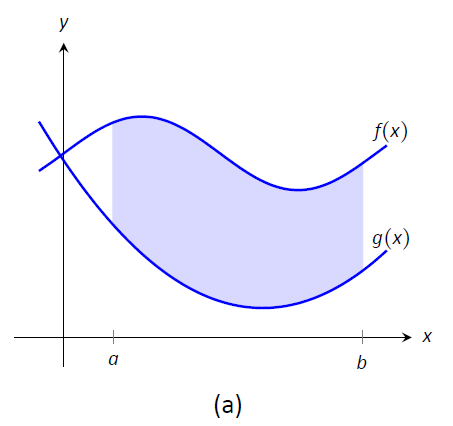
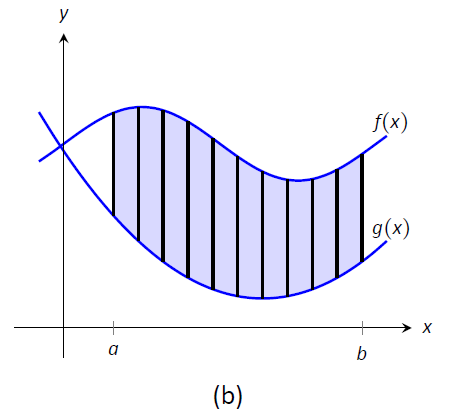
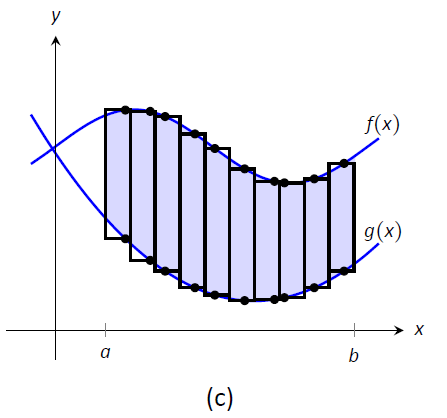
Figure
We now approximate the area of a slice. Again, we have many options, but using a rectangle seems simplest. Picking any
Taking the limit as
Theroem
Let
Example
Find the area of the region bounded by
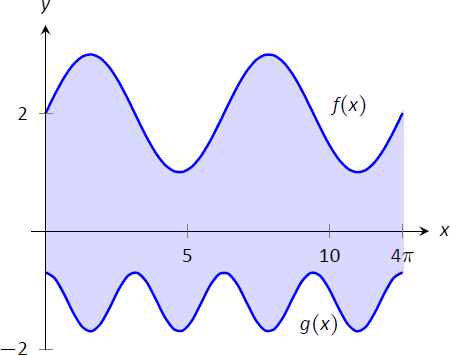
Figure
Solution
The graph verifies that the upper boundary of the region is given by
Example
Find the total area of the region enclosed by the functions
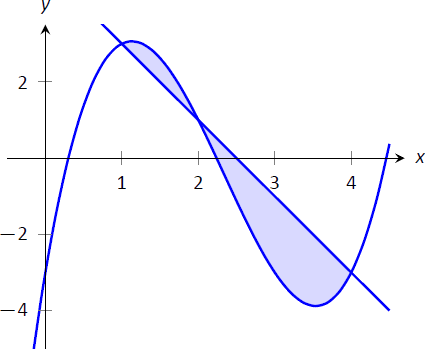
FIgure
Solution
A quick calculation shows that
The previous example makes note that we are expecting area to be positive. When first learning about the definite integral, we interpreted it as "signed area under the curve," allowing for "negative area." That doesn't apply here; area is to be positive.
The previous example also demonstrates that we often have to break a given region into subregions before applying Theorem
Example
Find the area of the region enclosed by the functions
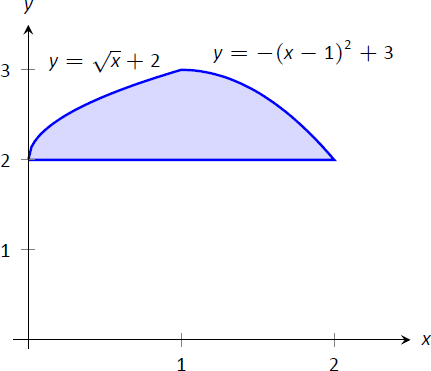
Figure
Solution
We give two approaches to this problem. In the first approach, we notice that the region's "top" is defined by two different curves. On
Thus we compute the area as the sum of two integrals:
The second approach is clever and very useful in certain situations. We are used to viewing curves as functions of

Figure
Figure
The area is found by integrating the above function with respect to
This calculus--based technique of finding area can be useful even with shapes that we normally think of as "easy." Example
Example
Compute the area of the regions bounded by the lines
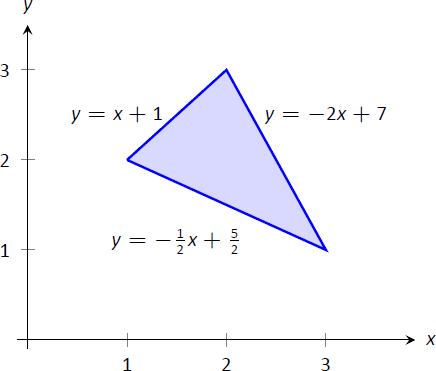
Figure
Solution
Recognize that there are two "top" functions to this region, causing us to use two definite integrals.
We can also approach this by converting each function into a function of
The "top" function is always
Of course, the final answer is the same. (It is interesting to note that the area of all 4 subregions used is 3/4. This is coincidental.)
While we have focused on producing exact answers, we are also able to make approximations using the principle of Theorem
Example
To approximate the area of a lake, shown in Figure
Solution
The measurements of length can be viewed as measuring "top minus bottom" of two functions. The exact answer is found by integrating
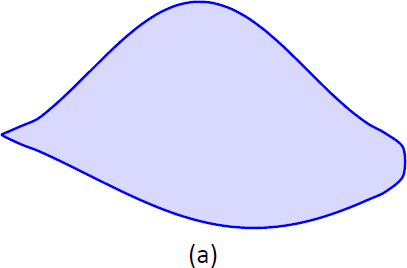
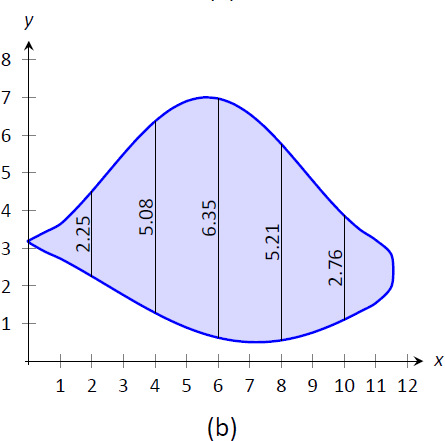
Figure
We have the following data points:
We also have that
Since the measurements are in hundreds of feet, units
In the next section we apply our applications--of--integration techniques to finding the volumes of certain solids.
Contributors and Attributions
Gregory Hartman (Virginia Military Institute). Contributions were made by Troy Siemers and Dimplekumar Chalishajar of VMI and Brian Heinold of Mount Saint Mary's University. This content is copyrighted by a Creative Commons Attribution - Noncommercial (BY-NC) License. http://www.apexcalculus.com/
Integrated by Justin Marshall.


